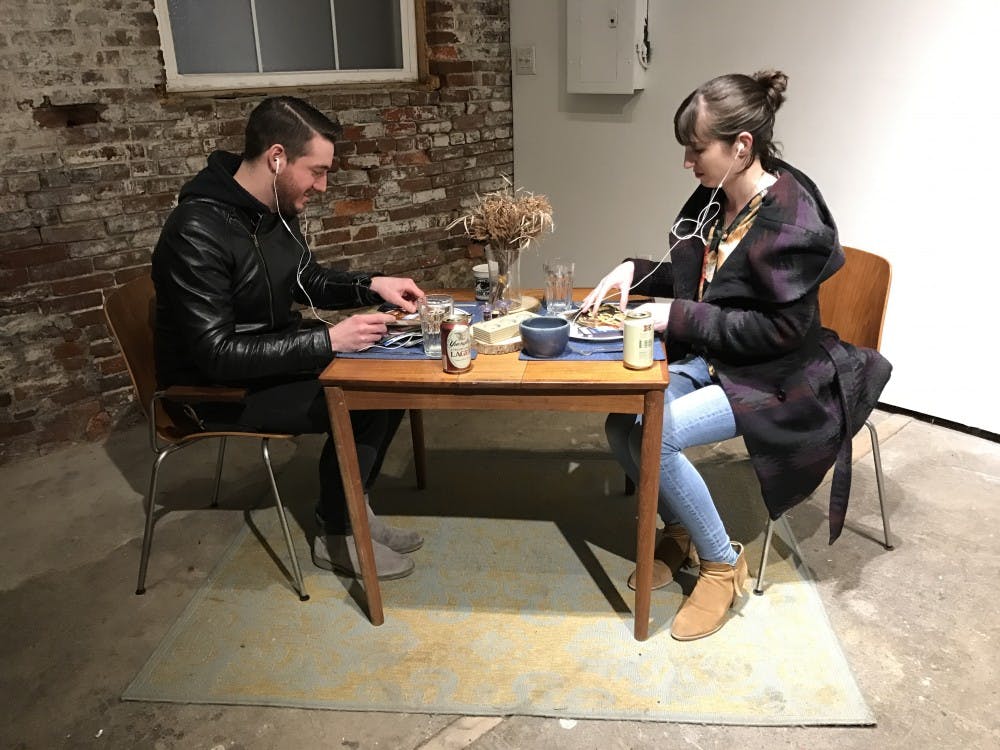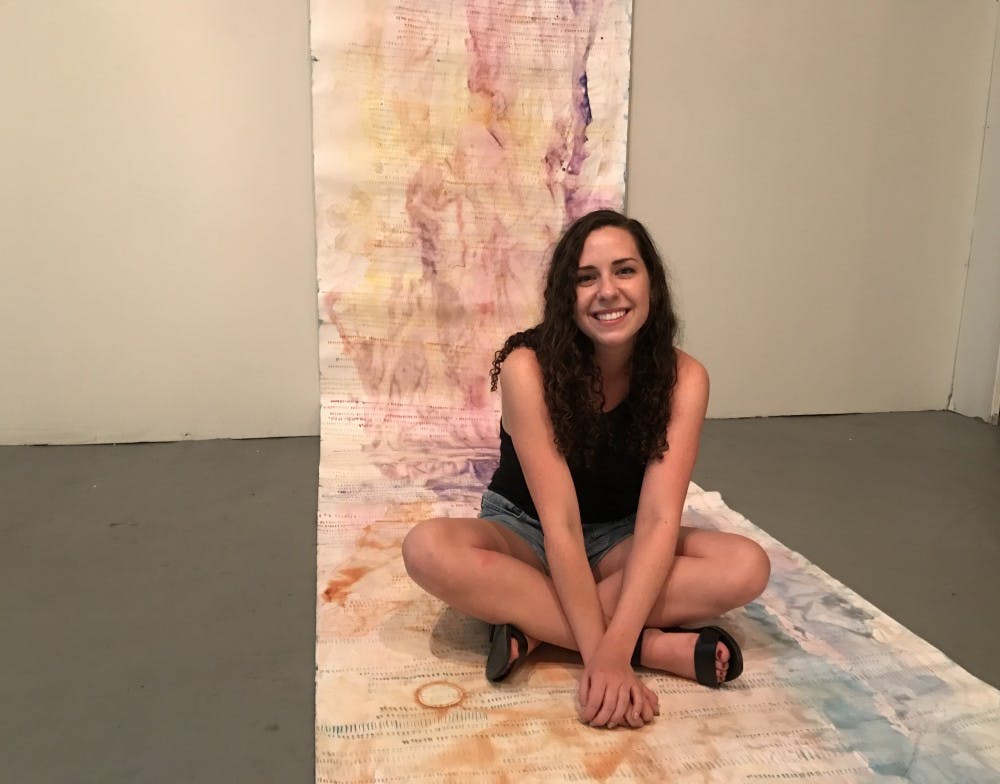Topping the list of sectors Penn students enter upon graduation are three industries: finance, consulting, and technology. These three fields are what this school prepares the quintessential Penn student for, fields built around highly institutional settings, predictably long hours, and cemented paths leading up towards the top of the hierarchy. But what about the others? For those who break from the traditional route at Penn, their lives are substantially different. And particularly for those working independently in the arts and creative fields there is an even a larger divergence from the norm. One such person is Terrill Warrenburg (C ’16), a recent Penn grad who has pursued and found success in her art.
A curator and artist, Terrill has a unique day everyday, considering the multifaceted nature of her work. To put it simply, there’s no routine. There’s no sitting at a computer in an office from 9 to 5 every day counting down the minutes till the end of the workday. The common thread to her everyday is the creativity and novelty she constantly pushes out.

Her role as a curator actually began at Penn. After working for the ICA on the curatorial side (see: an inflated latex pig at the current exhibit) for a year, she then interned at Locks Gallery (600 S Washington Square), one of the first commercial galleries in the city centered around contemporary art. There, she now works as the art fair and exhibition coordinator, working with the director on the curatorial pitch. In addition to this, she curates at Little Berlin (2430 Coral St), a self–run artist collective, home to Philly’s largest zine library and occasional pop exhibits, poetry readings, and performances.
It was there at Little Berlin where Terrill curated her first big show, FOUND, which was inspired quite literally by the garbage she would regularly see on the MFL subway line passing through Kensington. The idea was to create art from waste. Organizing a community clean up with RAIR (Recycled Art in Residency), she collected some of the waste (of steel or glass) and invited artists around Philadelphia to find the art in what is seemingly trash, hence the title FOUND.

Her second exhibit, titled EST & UTC + 5, was a collaboration between 10 artists from Philadelphia and 10 from Karachi, Pakistan, the title referring to the time difference between the two settings. Conceptually, it centered around building relationships between the artists and building a joint project together—all online, the artists never meeting. At the end, the artwork came together, exhibited simultaneously on opposite ends of the world and showing the relationship between art and empathy. On her own piece, she and Sadia Khatri documented their meals: the flavor, the atmosphere, the smells, everything, narrating as they ate. In a way, the food and presentation served as the art itself as a window to the typically “concealed and internalized dialogues with ourselves,” Terrill describes. “By the end, I felt so close to Sadia after doing this. We know things about each other probably more so than if we had sat down and had a meal together.”
As to the rest of her personal art, it, too, is a creation out of the mundane, starting with an accident: an ink spill. At the time, she was working on a separate art project when she knocked over an ink bottle. Looking down at the paper towel, she could only think, “Wow, this is so much more beautiful than whatever I had just been working for ten hours.” From that one spill, she saw an opportunity to “counter this unnatural strive for perfection which is facilitated by digital technology,” she says in a statement on the piece. It’s to highlight, as cliché and cheesy as it may sound, the perfections of the imperfections.

It’s weird to think of artists coming out of Penn, an institution known for producing the highest number of billionaires who primarily make their fortune through investment banking or consulting. This type of education is almost arguably at heads with the arts. Nevertheless, Terrill says it "grounded" her a lot. "It made me think of things more practically and about the intersection with different fields,” Terrill says. While the arts may not be the most popular field to enter after Penn, the school does a pretty good job in producing artists and allowing creativity to thrive. And Terrill is living proof of that.

